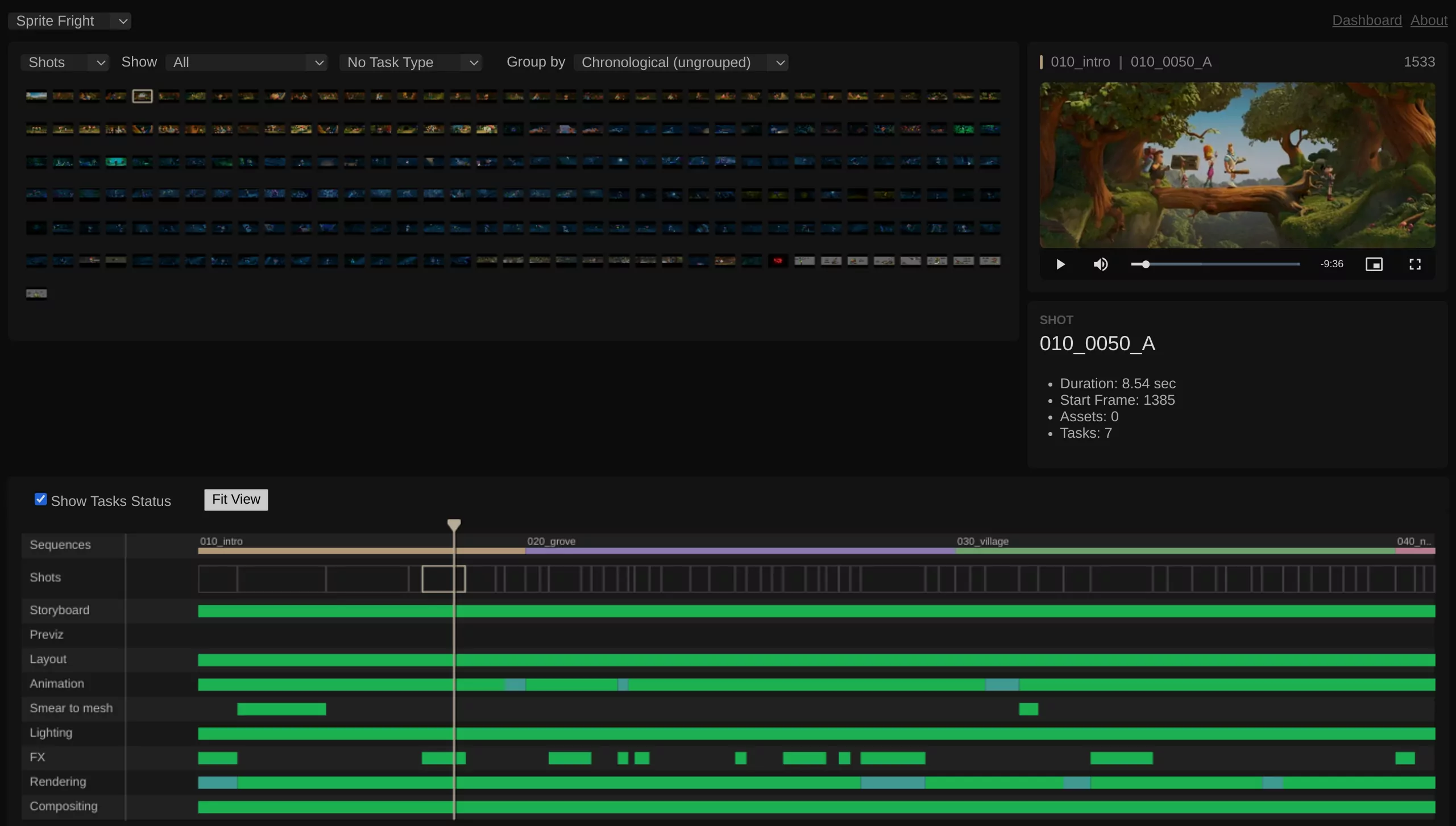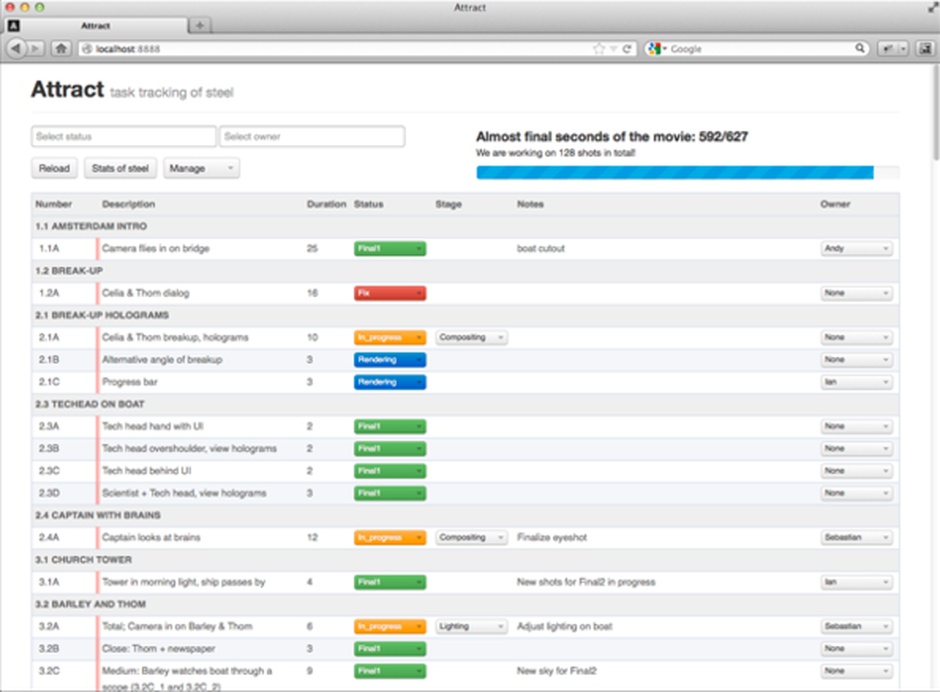Introducing Watchtower
by Alexandre ProkoudineBrand new web-based tool to visualize the status of film production

Over at Blender Studio, Francesco Siddi did a quick introduction of Watchtower, a new software project that helps manage the production of animated and live action movies. Here is some background info.
First off, what does Watchtower do?
The web app gives a bird’s-eye view over the progress on your video project, whether it’s a feature film animation or a documentary short. In fact, you can head over to a demo project and see for yourself.
Once you have your list of sequences and shots, you can start storyboarding and that’s where Watchtower becomes instantly useful: you can see the stage of every shot on the timeline, there’s color coding for sequences, and at any given time you can watch the entire film as long as your shots and assets have been uploaded.
So if you have some shots as storyboard images, some parts as previsualizations, and some parts as color-graded renders, you can still watch the entire thing to get a sense of how your story is developing, which is great for review too.
You can also use the grid view to look at details of shots and assets: length, amount of associated tasks in the tracker etc. But I expect that in fullness of time, it will be possible to drill down into more specifics.
Speaking of which…
How does it actually work?
Watchtower is a free/libre (GPLv3) web app written in Vue.js. It has been primarily designed to work on top of Kitsu, a free/libre (AGPLv3) collaboration platform for management of video production.
All data is accessed via Zou which is the official Kitsu API. But Watchtower can also integrate with other platforms via JSON (there isn’t much documentation on that yet, if any at all).
The Kitsu-based workflow is basically this: create and setup a new project, build a team, assign tasks, start uploading assets and shots as you go, progressively work your way towards completing all tasks and thus all sequences.
Watchtower will connect to the Kitsu project and build the timeline from all the project data.
The web app was developed by Francesco Siddi and Inês Almeida, with UI feedback and contributions from Pablo Vazquez (notably, educational video content on Kitsu is features characters and assets from the Caminandes series of short animated movies by Pablo).
While you can try Watchtower in action, you can also have a look at the video by Gamesfromscratch on the topic.
Why Kitsu?
Francesco Siddi first spoke about the history of switching to Kitsu in a blog post in July 2021. I absolutely recommend reading it to get a better sense of what was going on. Here is the gist of it.
Since 2012, the Blender Studio team had been using Attract, a custom project management solution designed by Francesco Siddi for the production of Tears of Steel.

Francesco iterated upon the initial design for most newer major Blender Studio projects including Cosmos Laundromat, and eventually Attract became a SaaS at Blender Cloud.
In 2020, Francesco and Pablo Vazquez started designing a new tool codenamed Lineup that would be “a production hub offering tight integration across task management, rendering and storage” (in Francesco’s own words) and working on top of Attract v4.0. But with Sprite Fright looming over, they ended up dropping Attract and switching to Kitsu, a 3rd party software project.
Francesco had been following Kitsu development for some years. He liked both the software, the way the project was managed, and the community that Frank Rousseau built. So Blender Studio not only switched to Kitsu for the production of Sprite Fright, they also got involved with helping develop it and created a Kitsu add-on for Blender (available on Gitlab).
I have no confirmation yet, but it looks like Watchtower is essentially an iteration of the initial design of Lineup, built around Kitsu rather than Attract.
What’s next
Watchtower isn’t trying to be an all-in-one solution like StudioBinder (which is interesting enough given that Watchtower is effectively a Blender project, IYKYK).
This is what the announcement post says about the next steps:
The grid-paradigm has proven itself quite powerful, and could be explored as a UI option for other tasks as well, such as render management. Next up is a workflow for creating and editing the shot data from within Watchtower, as well as casting assets in a fast, visual and interactive way.
My gut feeling says this is far from what we are likely to see in a few years time.
Oh, and it looks like the next generation of the Flamenco render manager is work in the progress, with Sybren A. Stüvel hacking on it like there is no tomorrow. Exciting times!
Patreon subscribers get early access to my posts. If you are feeling generous, you can also make a one-time donation on BuyMeACoffee.
